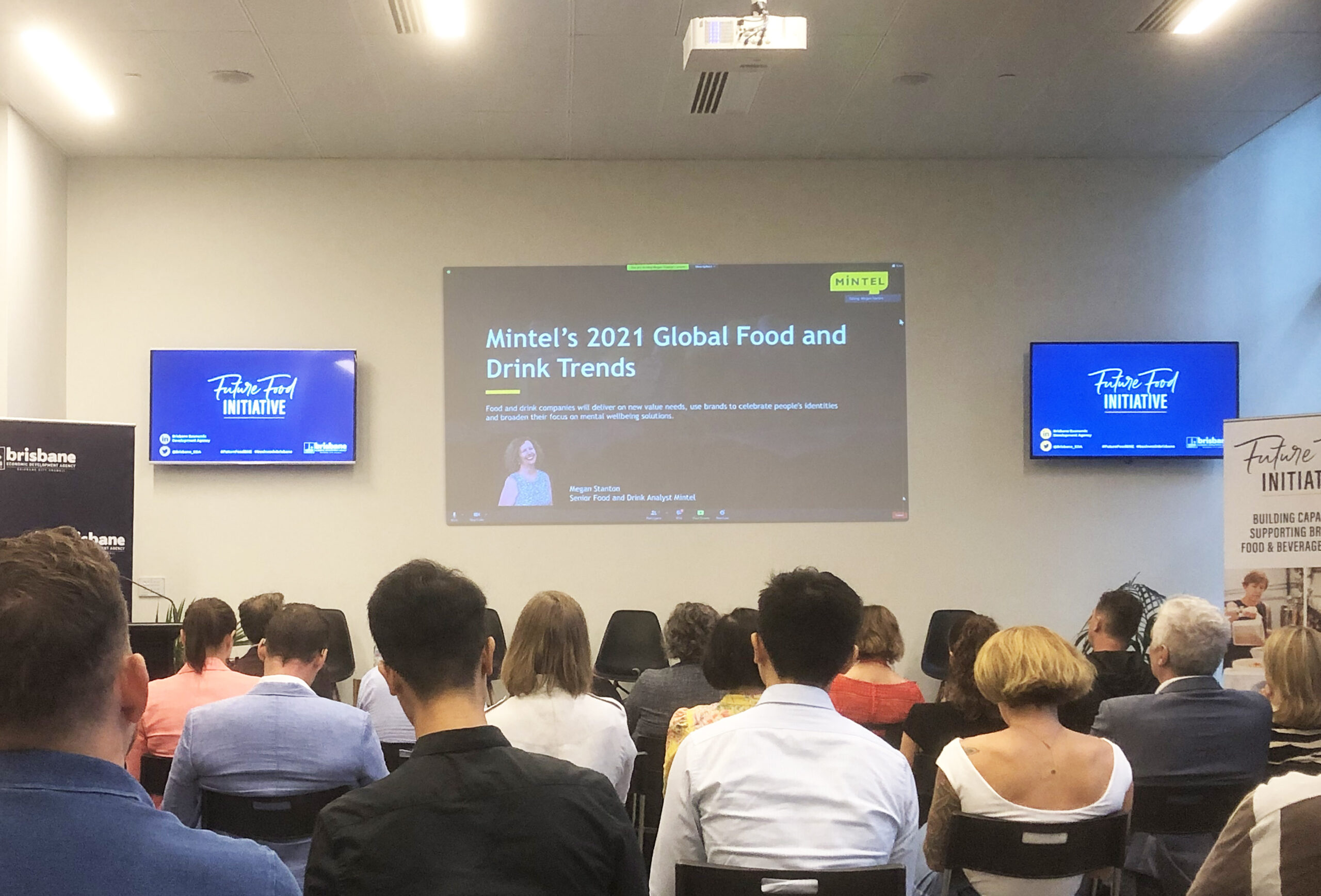Wiley’s Advisory Services Director, Andrew Newby recently attended the 2021 Future Food Boot Camp Event, part of the Future Food Initiative, hosted by Brisbane City Council’s Brisbane Economic Development Agency. There were presentations and panels with representatives from across the food sector. Here Andrew shares his recap and insights from the event including what trends data is showing for food manufacturers to be on board with and what consumption trends may be coming our way.
The Future Food Initiative
The Future Food Initiative is Brisbane EDA’s industry development program designed to nurture local talent within South East Queensland, and provide food entrepreneurs, producers and companies with the necessary skills, knowledge, networks and access to resources that will assist in the scaling of their enterprises.
Food trends and insights
The morning started with a presentation on how data can be tracked and used by food and beverage companies to focus products and marketing.
The presentation was made by Food Corp Trend Forecast (division of Newscorp) who presented how data was sourced from their electronic publications – Taste, Delicious and Australia’s best recipes. The searches that more than 6.8 million Australians made monthly during COVID and 80 million data points daily is crunched to provide insights into consumer behaviour and trends.
Food Corp presented two new mindsets;
- People want to trial new foods, new brands and be more adventurous.
- We are on an emotional rollercoaster – people were looking for reward foods and indulgence foods.
Manufacturers with brands that have a complete offering across these mindsets will do well.
Food Corp identified three consumption trends;
- Nostalgia remix – people searched for tried and tested recipes such as rice puddings, golden syrup as an ingredient, flummery and aeroplane jelly.
- The new easy – people were looking for simplicity – for example ‘three ingredient baking’
- Living travel through food – people can’t travel internationally so they looked for international food experiences (global soups and curries, Sri Lankan foods, Chef level pizzas)
Food Corp shared three hot marketing tips for food companies;
- Maintain brand presence
- Consider your message and avoid cliches
- Adapt to today – omni channel marketing
Data often shows conflicts where it seems people want to eat healthier, however indulgence foods are in high demand. During COVID, this showed this was still the case and more so as people struggled with emotional upheaval and changes to lifestyle. With more people at home, there was an increase in baking of breads, cakes and banana breads. It is a little ironic that with more people at home, most people wanted quick and easy recipes for scones and the like.
There was also a focus on zero waste because people wanted to repurpose what would otherwise have been thrown out. An example of this is making your own chicken stock from leftover chicken.
During winter there was need for comfort foods and also decadence, sticky date pudding was a popular search.
Mintel, who provide in-depth market analysis and consumer opinions, presented how our shopping habits have changed;
- Quality redefined – the road to recovery from the pandemic will see ethical considerations added to consumer’s value priorities of time savings, familiarity, and justifiable treats.
- United by Food – food and drink brands can balance a person’s needs to feel unique and bring people together to be part of communities of like-minded individuals who can make a difference.
- Feed the mind – food and drink will be accepted as solutions for mental and emotional wellbeing which will lead to new interest in psychology based on approaches to healthy eating.
The emotional impacts of COVID have been significant and Mintel reported that 62% of Australians and 68% of NZ are actively seeking ways to reduce stress. Eating healthier is has become a priority, with 42% of Australian Millennials saying that eating healthier has become a priority since COVID 19.
Adapting to build future resilience (then and now)
There were short discussions by companies on how they adapted their business to cope with new market conditions. The adaption ranged from how to cope with disruption to supply chain, the ability for staff to come to work, how to cope with doubling production almost overnight.
Case studies of success
Companies discussed how their business model changed with COVID-19. Some were already on digital platforms and offering home delivery, therefore being somewhat prepared for the changes that came with COVID-19.
The session was valuable to understand the behaviours and trends over the last 12 months, giving insights to consumer spending. Some companies thrived with double volume growth and their challenge was supply chain and people. For others, their challenge was maintaining a customer base impacted by lock downs and the inability for people to travel and socialise.
It will be interesting to see how these trends continue to develop this year, as the environment we find ourselves in develops.
– Andrew Newby



